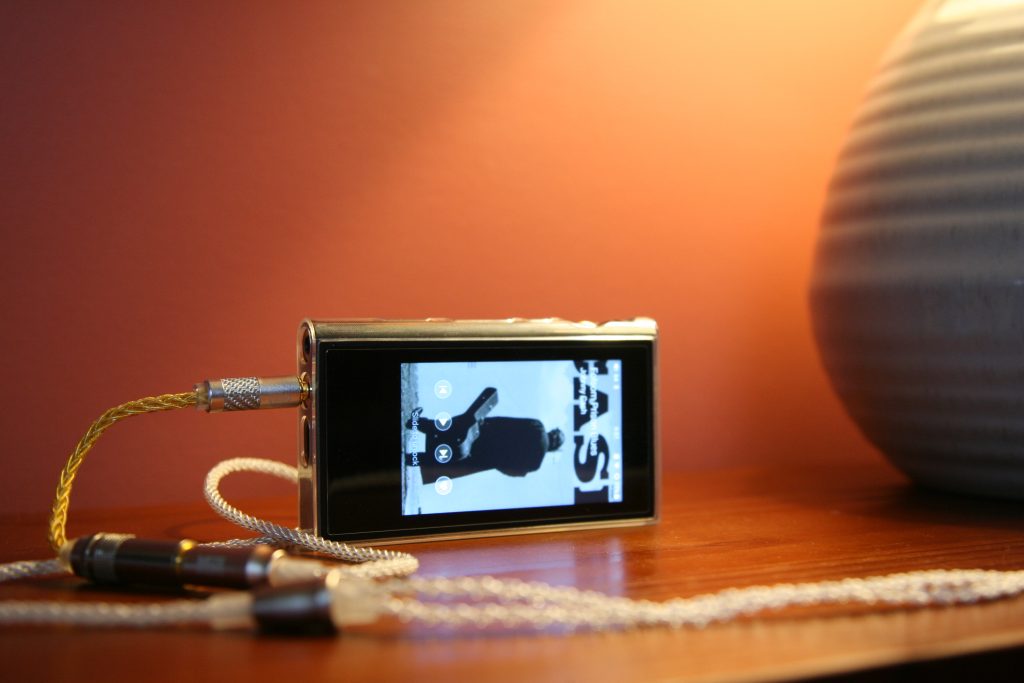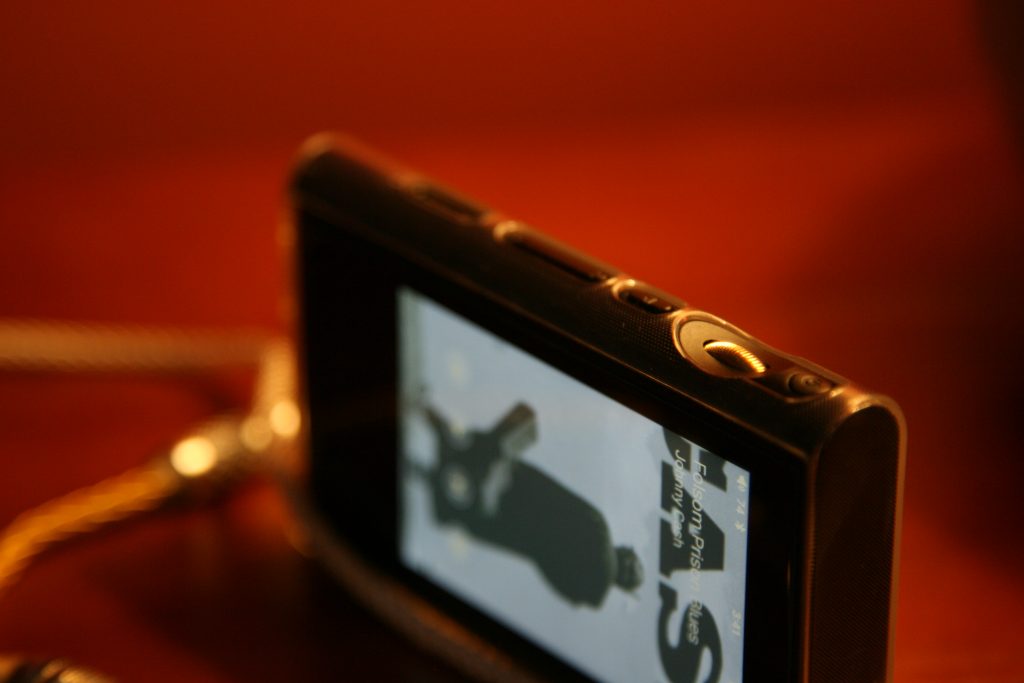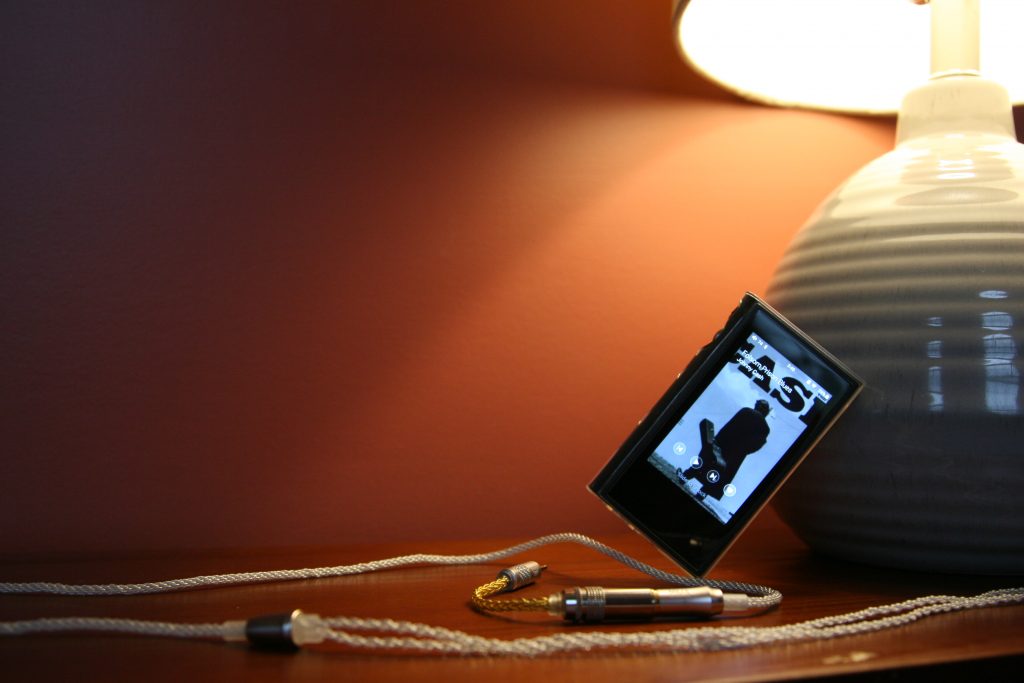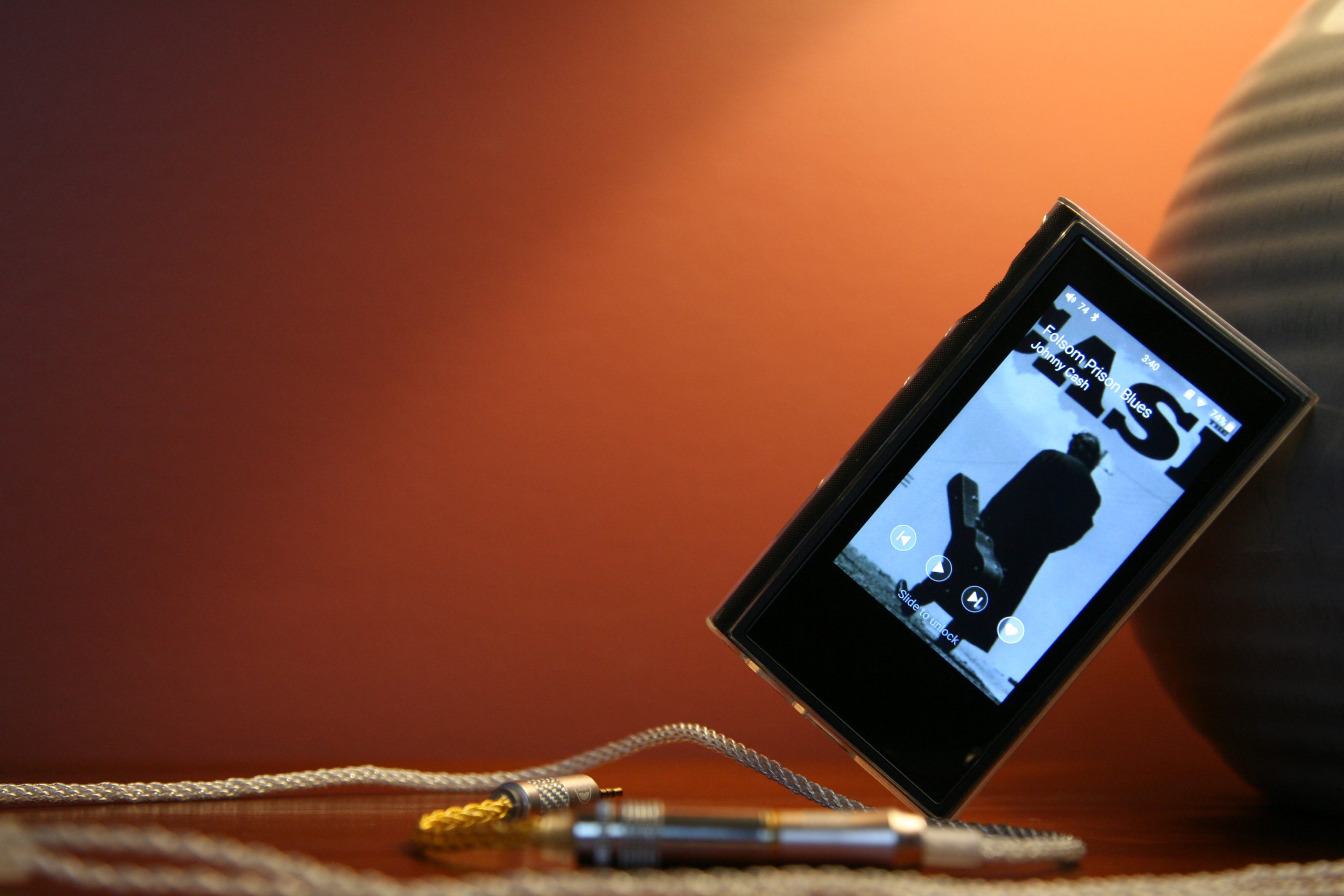FiiO makes a variety of generally affordable audio gear. The FiiO M9 is one of their mid-range DAP’s or Digital Audio Player. When I set out to buy a DAP or wireless DAC I weighed the pros and cons of each route. What I wanted was the convenience of digital music while also being able to use my iPhone and or Macbook. For streaming, I primarily use Spotify Premium and a handful of actual digital music files. I have wanted to get something for a while that would play FLAC files so I could rip CDs and play them back losslessly. The DAC itself would not help with the latter part on its own. After weighing the pros and cons I decided on getting a DAP, but which one? I did not want to spend a fortune but wanted something that was a good value. I have never owned a proper DAP before, granted I had a SanDisk MP3 player when I was in high school, This was back when they first really hit the market, to give you an idea, my parents still had dial-up internet and a Gateway Desktop. It sounded great to me then, mostly because it wouldn’t skip like my cd player and I didn’t have to carry a binder of CDs everywhere. MP3s though, are inherently bad, lossy files, but they had to be, my SanDisk MP3 player only had 512MBs of storage and microSD cards at the time cost a fortune for even a small amount of storage. 2021 is a much different time for digital music. My desktop editing computer has 2.5 terabytes of storage and a couple of Eternals. My CF cards for my cameras are 32 gigs each. That was inconceivable back a while, my first digital camera used a floppy disc with 1.14MB of space. So with storage cheaper than ever, having a bunch of FLAC files on my person sounds achievable.

M9 Features and Build
The FiiO M9 packs a decent amount of features into a single device, especially one for 250 dollars. That isn’t to say it isn’t without its faults as well but we will get into all that. The M9 comes stock with a few apps installed, it also allows you to install additional apps. FiiO does mention that additional or 3rd party apps can slow the M9 down. One of the Apps the M9 comes with is FiiO Music, which is where you will find any of the music files you load onto your Micro SD card. It seems to work pretty well if not a bit clumsy to navigate. I put about 10 cds worth of FLAC files on the 64gb micro sd card. Once you slot the card in you have to do a manual search for newly added songs. It does work but I think adding music could be a bit smoother. While I understand that FiiO is not Apple, having a PC/Mac software to connect and sync with would be nice, as well as an automatic song discovery. As for streaming, FiiO mentioned a possible slow down with added apps, Spotify does run a bit slow at times. It is a whitelisted app per FiiO. Users can install apps not whitelisted and those are warned against due to possible issues, but it is possible.
The M9 has a great solid feel when you use it. The buttons have good placement and the volume wheel has a nice feel to it. One thing to note about the buttons is that the previous and next bar is counterintuitive. The bottom is next and the top is previous, it makes sense if you think about scrolling through a list. The screen on the M9 is high enough resolution for a music player, it supports 5 point touch and is responsive enough to not have any noticeable delay. On the bottom, you have the option of a 3.5mm output, 2.5mm balanced, or the USB C. The M9 will also connect to Bluetooth headphones if you prefer a wireless experience. I used Meze 99 Classics with their balanced 4.4mm cable. The only problem is I had to order an adapter to the 2.5mm socket. I would say with 4.4mm being a fairly common plug an included adapter would be nice but not a deal-breaker. The OKCSC Gold Plated 2.5mm Male to 4.4mm I got on amazon works great and has a great build quality in case you need one of your own.

Using the M9
The operating system is based on Android, though heavily modified to be more to the point. It is somewhat limited compared to an Android phone from what I can tell. I have only used my brother’s Samsung a few times. It took me about an hour to really get used to the gestures and menu systems. Once I figured out how to navigate the M9 it was pretty simple to use. Adding Spotify was a bit confusing as there is no app store on the device so you need to find the install file online and save it to the micro SD card, from there you can install it from the M9’s file folder. I understand why there is not a conventional app store, though it would be nice if FiiO had a page with the download files of support software. Once you have your music added and apps installed using the M9 is easy and intuitive if you have used any touch screen smart device, and especially so if you are an Android user.

M9 Sound
The FiiO M9 has Dual AK4490EN DACs inside which does a great job. The first thing I noticed when streaming Spotify was the sound quality was superior to that of my iPhone 11 Pro as well as my MacBook. It can be hard justifying buying an additional device to play music when you have a smartphone and a laptop, however, neither of those devices are dedicated to music listening. The DACs they get are decent enough for the average user but rarely will a multi-use device have a top-quality DAC chip in or multiple. As electronics get smaller, space is at a premium and with the performance demand of a phone being more on space, battery life, and video quality, audio is not going to get the penthouse. The M9 is the first and only Android device that I own, so I will not compare it to some of the Android phones available. I know some focus more on audio, and for others gaming ability so there may be one that sounds better than the M9. I don’t have any issue with Android, I just got into the Apple ecosystem so many years ago and it has worked out well for me.
When I listen through the M9 on either headphones or through my 2 channel system it just sounds better. There is more detail and the bass is much richer. All of this is compounded when I listen to FLAC files with it. The HiRes files just extend higher and lower, where lower res or lossy files cut that off to save space. With any decently revealing system, you will notice it quite easily. I don’t want to get too much into the comparison of FLACs on this device and another as this is my first device that supports them, my comparisons are limited to just it. I will say when I compare the FLAC version of a song to both Spotify and Vinyl, it sounds much fuller. The range of frequency seems better and the sound stage grows in nearly all directions. Personally, I have to say now that FLAC is the best sounding format I have heard and compared directly to other formats. Don’t get me wrong I will still buy and play vinyl records, but for me, that is not about sound quality as much as it is about being involved more in the listening process. Something digital, media files at least, will never have is rummaging through the crate or shelf and picking an album, dropping the needle, and listening all the way through without being able to just hit next. Vinyl offers a different experience and does sound better than some formats, such as lossy streaming and cassette tapes, to me at least.

I have nothing negative to say about the M9 in regards to sound. I am sure there are players that sound better, but for the price point of 250 dollars, I am very happy. It is a step up in my system’s digital listening side and that makes me happy. I had not put as much stock as I should have into digital until now, it has just been a convenience thing for me. What digital and the FiiO M9 along with it bring to the table is convenience, superb sound quality, and a library of music in your pocket. Vinyl will never be advertised as convenient unless maybe you are comparing it to beeswax tubes maybe. There are nights where I just want to sit back and listen to a variety of music in a playlist and not have to worry about flipping the record, especially when I am working on reviews. When I had the iFi Pro IDSD, it was simple enough to stream to that and use my computer and phone. Some folks may ask why not just connect the phone to the Preamp and use the computer, which for many works out just fine, however, I use my phone to take initial notes and long term notes on a product being reviewed. Which sure I could send to my MacBook, but I still have subpar sound quality from the phone. The solution was to get the M9, which gives me convenience without compromise in quality.
M9 Tech Specs
| Main Unit | |||
| Name / Model No. | M9 | Operating System | Customized |
| CPU model | Exynos 7270 14nm | No. of cores | 2 |
| CPU operating frequency | 1GHz | DAC | AK4490EN×2 |
| Keyboard | Virtual QWERTY keyboard | Input method | Multi-touch screen |
| Special features | LDAC,HWA,Gesture operation,WiFi Streaming,RGB indicator for different formats,Bi-directional Bluetooth,8-layer HDI PCB | User interface | Customized/FiiO Music |
| Chips used | SoC: Samsung Exynos 7270,DAC:AK4490EN*2,FPGA:A3P030,LPF:OPA1612,BUF:OPA1622*2 Bluetooth chip:SAMSUNG S5N5C10B01-6330 | ||
| Connectivity | |||
| WiFi | 2.4G,WiFi transmission supported | Bluetooth | 4.2 |
| USB | TYPE C Two-way USB2.0 | Bluetooth transmit | LDAC/aptX/aptX HD/SBC(Available when playing on M9 or using M9 as USB DAC) |
| HWA(LHDC) | Available when playing on M9 or using M9 as USB DAC | Bluetooth receive | SBC/LDAC (required to update to the latest firmware) |
| AirPlay | Supported (required to update to the latest firmware) | DLNA | Supports Windows for now, will support more in the future |
| FiiO Link | Supported (required to update to the latest firmware) | ||
| Display screen | |||
| Display size | 3.2 inches | Number of colours | 16M |
| Display type | LG IPS screen | Viewable angle | Full-view |
| Resolution | 480×800 | Pixel density(PPI) | 292 |
| Touchscreen | 5-finger multi-touch | ||
| Storage | |||
| RAM | 768MB | ROM | 4GB |
| Storage expansion type | Micro SD card | ROM available to user | 2GB |
| Maximum storage expansion | Theoretically 2TB (only one micro SD card slot) | ||
| Buttons and ports | |||
| Buttons | Physical button+Side volume scroll+Touch screen | Button customization | N/A |
| Headphone out (PO) | 3.5 mm headphone jack+2.5mm balanced headphone jack | USB | Two-way TYPE C USB2.0(Charging/Data transmisson/USB DAC/USB Audio) |
| Line out (LO) | 3.5 mm port(shared PO) | SPDIF output | 3.5mm port(shared PO) |
| General | |||
| Color | Black / Silver | Dimensions | 60mm*106mm*13.3mm |
| Weight | about 133g | Volume control | 120 steps +/- button control |
| Recommended headphone impedance | 16~300Ω | Equalizer | 10-band EQ (±6dB), 9 presets+custom preset |
| Treble control | N/A | Bass boost | N/A |
| Balance control | ±5dB | Gain control | L/H |
| USB DAC | Asynchronous 192kHz/32bit | USB Audio | DSD64/128,DoP/D2P |
| Power specifications | |||
| USB power adapter | DC 5V/2A recommended | Battery capacity | 2350mAh Li-polymer battery |
| Charging indication | Large charging icon shows on display when it’s off, small charging icon shows on upper right of display when it’s on | Charging time | <2h(DC5V/2A) |
| Battery indication | Yes (accurate battery % readings) | Deep sleep time | 45 days |
| Battery Life & Test Conditions | |||
| 3.5mm headphone output:>10h | |||
| Volume | 46 | Load | M3 open earbuds (27 Ω) |
| Screen | OFF | Test File | MP3 44.1kHz/16bit |
| EQ | OFF | ||
| 2.5mm balanced output:>9h | |||
| Volume | 48 | Load | M3 open earbuds (27 Ω) |
| Screen | OFF | Test File | MP3 44.1kHz/16bit |
| EQ | OFF | ||
| Bluetooth output:>30h(SBC) | |||
| Volume | 60 | Load | BTR1+FH1 |
| Screen | OFF | Test File | MP3 44.1kHz/16bit |
| Others | |||
| Firmware Upgrade | Supports both via zip file and OTA(*The product uses GPLv2 compliant firmware.) | Font size | N/A |
| Firmware Upgrade | Supported | Third-party apps support | Can install whitelisted third-party music streaming apps |
| Line output specifications | |||
| THD+N | <0.002%(1kHz/10kΩ) | SNR | ≥117dB (A-weighted) |
| Frequency response | 5Hz~80 kHz(-3dB) | Noise floor | <5uV |
| Channel separation | >105dB | Line level | 2V |
| Headphone out specifications 1(3.5mm port) | |||
| Output power 1 | ≥125mW(16Ω / THD+N<1%) | Output impedance | <2Ω |
| Output power 2 | ≥170mW(32Ω /THD+N<1%) | THD+N | <0.002%(1kHz/32Ω) |
| Output power 3 | ≥19mW(300Ω / THD+N<1%) | Separation | >72dB |
| Frequency response | 5Hz~80 kHz(-3dB) | Peak output voltage | 6.5Vp-p |
| SNR | ≥118dB (A-weighted) | Noise floor | <5uV |
| Headphone out specifications 2(2.5mm port) | |||
| Output power 1 | ≥125mW(16Ω / THD+N<1%) | Output impedance | <2Ω |
| Output power 2 | ≥195mW(32Ω /THD+N<1%,balanced turbo off) ≥220mW(32Ω /THD+N<1%,balanced turbo on) | THD+N | <0.002%(1kHz/32Ω) |
| Output power 3 | ≥24mW(300Ω / THD+N<1%,balanced turbo off) ≥77mW(300Ω / THD+N<1%,balanced turbo on) | Separation | >98dB |
| Frequency response | 5Hz~80 kHz(-3dB) | Peak output voltage | 7.07Vp-p |
| SNR | ≥113dB (A-weighted) | Noise floor | <10uV |
| File format support | |||
| Lossless: | DSD:DSD64,128(iso”“.dsf”,“.dff”) APE(Fast): 192 kHz/24 bit APE(Normal): 192 kHz/24 bit APE (High): 192kHz/24 bit APE (Extra High): 48kHz/24 bit APE (Insane): 48kHz/24 bit FLAC: 192 kHz/24 bit WAV: 192 kHz/64 bit Aiff:192 kHz/24 bit Aif:192 kHz/24 bit WMA Lossless: 96 kHz/24 bit Apple Lossless: 192 kHz/24 bit | ||
| Lossy compression: | MP3,OGG,WMA,AAC… |

Conclusion
For a long time with digital listening, I was willing to trade off some sound quality for the ability to just hit play and go. With the M9 I get most of the convenience as well as sound quality. While it is not a perfect device, it is a good one. With the wide variety of file support and listening options, it has something to offer almost everyone. I think the operating system and user interface could use a bit of polishing but the foundation is good. The M9 brings quality digital sound to users on a budget, without compromising too much to get there. I would love to demo some other DAPs from both FiiO and others to really see where it can take me. It would be nice to see what better back and amp stages sound like.
Pros:
- HiRes support
- Streaming support
- Balanced outputs
- Good build quality and ergonomics
- Excellent price to performance
- Good battery life
Cons
- The operating system could be smoother
- File management could be more intuitive
- A native but limited app store would be nice






Disclaimer:
I purchased the FiiO M9 for personal use, FiiO did not pay in full or part in exchange for a review.


I think you should also point out how the owners of the M9 have been having storage issues with Spotify for offline listening where it basically keeps switching back to internal memory and removing downloaded playlists and it has been years and they haven’t addressed the issue yet.
That is an interesting issue, I have not tried to download any playlists on mine for offline as I have reserved most of my card for FLAC files. Though I will try it out on a smaller playlist and see what happens. I will also try to reach out to Fiio to see if they have any thoughts on the matter. At least one of these things I can guarantee will have a follow up.